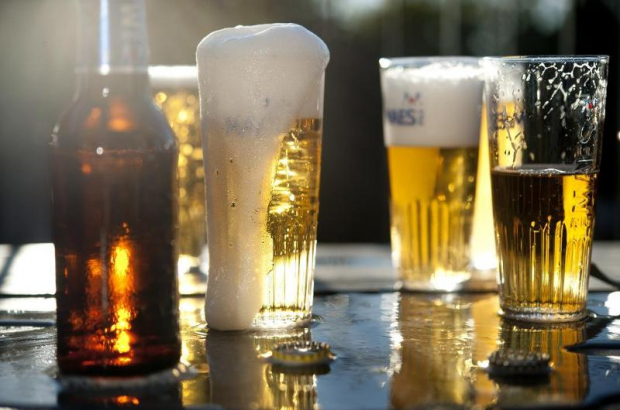- Daily & Weekly newsletters
- Buy & download The Bulletin
- Comment on our articles
Scientists take beer tasting to the next level
Beer tasting has been pushed to a whole new level thanks to the world’s first scientific beer atlas, created by scientists in Leuven after three years of research.
Belgian Beer, Tested and Tasted provides detailed descriptions of 250 Belgian beers, plus a handful of foreign drinks. For example, the renowned Westvleteren 12 is described as having “a complex nose with notes of red fruits, plums, raisins mixed with cappuccino, milk chocolate and coffee”.
The researchers were led by Professor Kevin Verstrepen and Dr Miguel Roncoroni, who are connected to the Flanders Institute for Biotechnology VIB and the University of Leuven (KU Leuven). The book is the result of years of work by their teams, using the newest technology.
“It was born out of the frustration that there was a lack of objective data and figures to describe and compare Belgian beers in a scientific way,” says Verstrepen, who is also a trained sommelier. “Most beer books offer a subjective assessment based on tasting sessions.”
True to their profession, the scientists adopted a methodical approach. They measured 270 parameters, including colour, bitterness, alcohol content, sugar content, protein content and more than 250 molecules that contribute to the beers’ aroma. Seventy of those aroma molecules were used for a scientific description of each beer in the book.
“This chemical analysis taught us a lot about the beers but was not sufficient to determine the taste of the beer,” says Verstrepen. So they also selected and trained a 15-person panel to blind-taste each of the beers and describe its taste and flavour. The combination of this data in computer models, using artificial intelligence, allowed the scientists to create analytical and sensory profiles of all beers – which is also included in the book.
The guide also describes the breweries, gives stats on bitterness, alcohol content and calories and provides a chart summarising the results of a detailed chemical analysis. You can also find out which beers are similar to one another. So if you’re a fan of Westvleteren – notoriously difficult to get hold of – you would probably also enjoy Rochefort 10 and Sint-Bernardus 12.
The beers are grouped in 15 categories – such as hoppy beers, stouts and porters, Flemish ales and low- and no-alcohol beers. The selection is an interesting mix of classics like Leffe Blonde and lesser-known beers such as the Paljas IPA.
The book doesn’t name the “best beers” but does award a “panel selection stamp” to the 20 that received the highest scores from the tasting panel. Gulden Draak, Anglium Extra Hop and Guldenberg were among the beers given this label.
A surprising feature of the book is the inclusion of low- and no-alcohol beers, which are traditionally looked down upon by beer enthusiasts. “We now have a second generation of low- and no-alcohol beers which is much better than the previous,” says Verstrepen. “Brewers are experimenting with the recipes, giving these beers more character.”
The book also has a clear message for those beer lovers who only drink certain Belgian pils beers and dismiss others. “The Belgian pils beers are very similar; the differences between Stella and Jupiler, for example, are really subtle,” Verstrepen says.
Although they are not included in the book, he also defends Budweiser and Heineken, which are often ridiculed by Belgians. “These are technically good beers,” he says. “But they are less bitter than their Belgian counterparts, which means they are less appreciated here.”
Not only did the research lead to a book, it is also part of a long-term project of the VIB and KU Leuven. “We want to improve our chemical understanding of how the aroma of a beer is formed,” Verstrepen says. “This can allow us to improve and change beers, for example giving them a fruitier aroma, by adjusting the chemical structure.” Yeasts are essential compounds in this process.
Money raised from selling the book will go towards research and a VIB school programme in which young scientists encourage scientific interest among children by conducting experiments at schools.
Belgian Beer, Tested and Tasted, is available in English and Dutch and is published by Lannoo.
Photo: Kristof Ketels/Belga



















